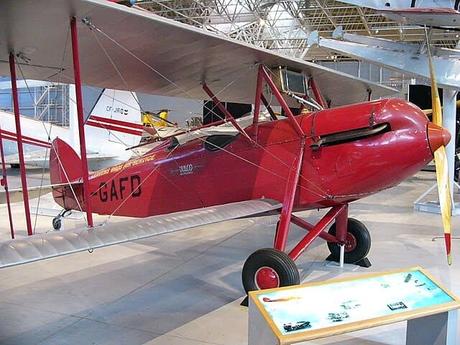The Waco 10, also known as the Waco GXE, is a classic American biplane that epitomizes the golden age of aviation in the 1920s and 1930s. Produced by the Waco Aircraft Company, the Waco 10 became one of the most popular and widely used civilian aircraft of its time. In this article, we will delve into the design, development, performance, and legacy of the Waco 10.
Design and Development
The Waco Aircraft Company, founded in 1920 in Troy, Ohio, quickly established itself as a significant player in the burgeoning aviation industry. The Waco 10, introduced in 1927, was a product of the company’s vision to create a reliable, versatile, and affordable aircraft for the civilian market.
The Waco 10 featured a traditional biplane design with two wings stacked one above the other, providing excellent lift and stability. It was constructed primarily of wood, fabric and other materials that were standard in the era’s aircraft construction. The open cockpit design allowed for an authentic flying experience, which was appealing to many pilots of the time.
One of the key aspects of the Waco 10’s design was its adaptability. The aircraft was configured to accommodate various engines, which made it versatile and attractive to a wide range of customers. The most common engine used was the 90-horsepower Curtiss OX-5, which provided the reliability of performance and ease in maintenance.
Performance and Capabilities
The Waco 10 quickly gained a reputation for its solid performance and user-friendly characteristics. It had a maximum speed of about 105 miles per hour (169 kilometers per hour) and a cruising speed of 85 miles per hour (137 kilometers per hour). The aircraft’s range was approximately 500 miles (805 kilometers), making it suitable for both short and long flights.
With a wingspan of 30 feet (9.14 meters) and a length of 24 feet (7.32 meters), the Waco 10 was compact yet spacious enough to carry a pilot and one or two passengers. Its design allowed for good handling and stability, making it a popular choice for flight schools, barnstormers, and private pilots.
Variants and Uses
The success of the Waco 10 led to the development of several variants, each tailored to specific needs and markets. Some of the notable variants included:
- Waco ASO: A specialized version for aerial photography and surveying.
- Waco CTO: Equipped with a more powerful engine for improved performance
- Waco RNF: A refined version for sports and recreational flying.
The Waco 10 and its variants were used in various roles, from training new pilots to performing in airshows and barnstorming events. Its robustness and ease of maintenance made it a favorite among pilots who needed a dependable aircraft for diverse operations.

Legacy and Collectibility
The Waco 10’s impact on aviation history is significant. It played a crucial role in making aviation accessible to a broader audience during a time when flying was still a novelty for many. The aircraft’s popularity contributed to the growth of general aviation in the United States and helped foster a new generation of pilots and aviation enthusiasts.
Conclusion
The Waco 10 remains a symbol of the golden age of aviation, reflecting the innovation and adventurous spirit of the 1920s and 1930s. Its design, performance, and versatility made it a cornerstone of civilian aviation. The Waco GXE’s place in aviation history is firmly secured.
